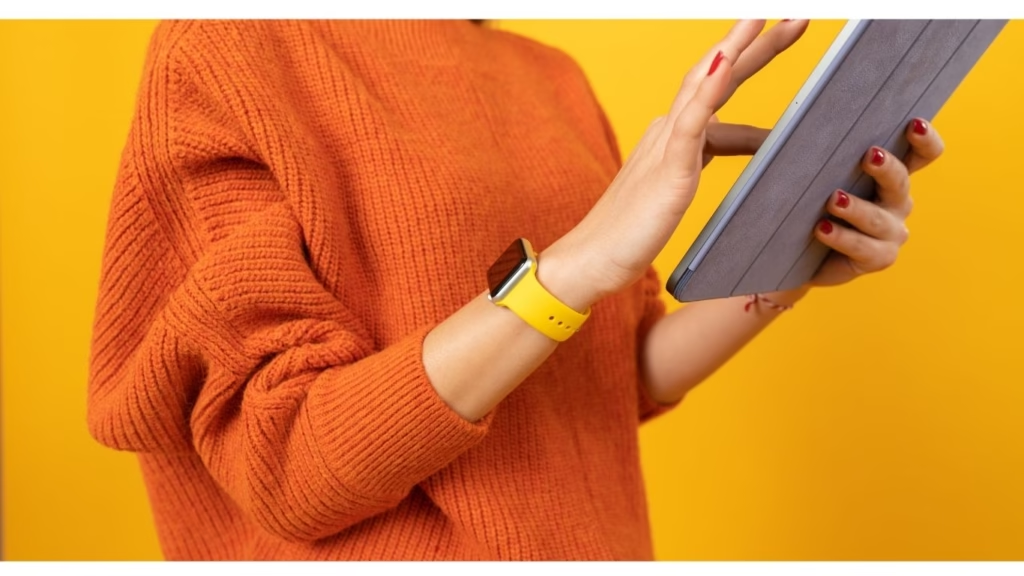The Best Femtech of 2025: Smarter Wearables for Women’s Health
The femtech wearable market is set to reach $60 billion by 2025. This rapid rise is representative of a new wave of devices which track more than just windows of fertility, and instead track up-to-the-minute stress-induced hormone measurements. Most impressively, these inventions currently provide more than 90% of clinical accuracy. Although most fitness trackers for that harried mom on the go are pretty basic, femtech makers are slaying a decade ago in 2025. And with these medical-grade sensors and AI, they deliver actionable insights on menstrual stats, cortisol levels, and hormonal balance in nauseating detail.
This guide examines what the future holds for femtech, and explains:
✔ What ultra-processed foods are really doing to our bodies ASAP?
✔ Key privacy protections around sensitive health information
✔ Anticipated trends such as at-home hormone testing built into wearables
1.1 Why the Best Femtech of 2025 Is Made for Women
Historically, there has been a gender data gap—70% of health studies were based on male biological systems (NIH 2024). In contrast, today’s femtech devices offer tailored health support for women. For example, cycle-syncing is now integrated, allowing fitness and nutrition guidance to shift based on menstrual phases. Additionally, postpartum care is getting a major upgrade. These wearables now help track uterine recovery and pelvic floor health after childbirth.
1.2 The Best Femtech of 2025: Breakthrough Features
| Feature | How It Helps |
|---|---|
| Real-time cortisol monitoring | Tracks how stress impacts fertility and sleep. |
| Tracking your Basal Body Temp (BBT) | Measures the body temperature when you’re at rest (aka your BBT), which can help you know when you’re ovulating. |
| Vaginal pH sensors | Find infections such as BV at an early stage, before you have symptoms. |
| LH/estrogen testing | Recognizes hormonal concerns associated with PCOS. |
These features, once unavailable or unreliable, are now built into the best Femtech of 2025.
2.1 How Femtech Devices Stack Up Against Smartwatches
While smartwatches, such as the Apple Watch, are great at tracking steps and general activity, they lack the ability to sense hormones. The leading femtech in 2025 has instead invested in hardware to analyze hormone metabolites. For example, The Mira system, on the other hand, follows LH and estrogen via your pee to give very personalized hormonal insights.
3.1 What Femtech Data Can Teach Us About Health
Stress and fertility have a direct correlation, as proven by a study from the Fertility Journal from 2024. It found that 40% of women using femtech are delaying ovulation as a result of heightened cortisol levels. Thankfully, wearables that utilize AI now understand stress patterns and suggest effective solutions, like magnesium and adaptogens. This makes stress management more actionable than ever before.
3.2 Early Detection: A Game Changer for PCOS and Endometriosis
Femtech wearables can also detect early signs of chronic health conditions. For instance, PCOS may occur as irregular BBT patterns and increased LH surges. In the meantime, markers for endometriosis tend to manifest as post-cycle spikes in inflammation — something advanced skin-temperature sensors can now identify. That could mean users receive crucial early warnings before symptoms become disruptive.
4.1 Data Privacy: How the Best Femtech of 2025 Protects You
As personal health data grows more valuable, privacy remains a top concern. The good news is that most apps now securely store your data using protections introduced over the past five or six years thanks to the Health Insurance Portability and Accountability Act (HIPAA). These measures ensure your cycle and hormone data stays in good hands. Better yet, more platforms now enable anonymized sharing for medical research, which helps drive overall improvements in women’s health.
4.2 Who Actually Accesses Your Femtech Data?
Device manufacturers rely more and more on aggregation and anonymization to improve AI abilities—70%, to be exact. Crucially, regulations will block insurance companies from accessing femtech data after 2025. This marks a big victory for user privacy and consumer trust.
5.1 The Future of the Best Femtech of 2025 and Beyond
Saliva-driven wearables could arrive as soon as 2026. These devices can detect estrogen and cortisol in only 15 minutes. At the same time, engineers are developing patch-based progesterone monitors for IVF patients. These developments suggest a new day when hormonal diagnostics might occur fast and at home, with the accuracy of clinical tests.
5.2 Postpartum Recovery Tracking: What’s Next?
Femtech now expands beyond fertility and period tracking to address postpartum care. Novel sensors for uterine contractions let mothers track their postpartum healing. What’s more, developers are trialing AR wearables to coach pelvic floor rehab from home, offering extra convenience and support where women need it most.
Conclusion: Picking the Best Femtech of 2025 for Your Needs
To select the perfect wearable, first determine your health goals—whether you’re focused on fertility tracking, stress management, or general wellness. Always prioritize apps that protect your privacy, and choose only those that are HIPAA-compliant to safeguard your Personal Health Information. Finally, select devices that have clinical backing, such as FDA clearance, so you can trust you’re using tools that deliver results.


1 Comment
Pingback: Best Natural Treatment for Hormonal Acne - WELLNESS ADDITION